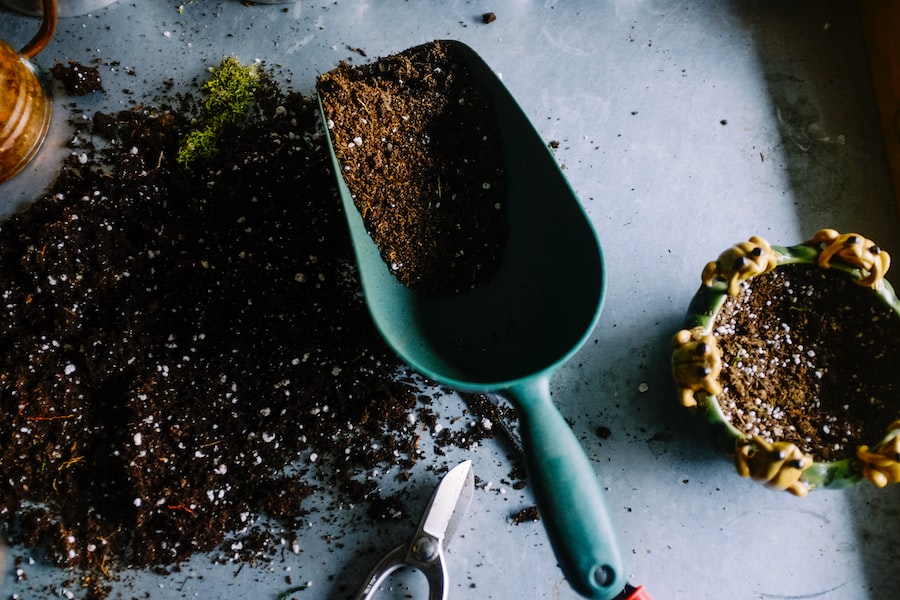
Perennial Pleasures: Designing a Year-Round Garden
Year-round gardening refers to the practice of cultivating and maintaining a garden throughout the entire year, regardless of the season. It involves selecting the right plants, designing the garden layout, maintaining the garden, and planning for seasonal changes. Year-round gardening offers numerous benefits, including a constant supply of fresh produce, a beautiful and vibrant outdoor space, and the opportunity to connect with nature.
Key Takeaways
- Year-round gardening is possible with the right plants, design, and maintenance.
- Choose plants that are suitable for your climate and soil type for a successful perennial garden.
- A well-planned garden design with hardscaping elements can provide year-round interest and structure.
- Regular maintenance tasks such as pruning, mulching, and fertilizing are essential for a healthy year-round garden.
- Soil health is crucial for the success of a perennial garden, so focus on improving soil structure and fertility.
Choosing the Right Plants for a Perennial Garden
Perennial plants are plants that live for more than two years and continue to grow and bloom year after year. They are a popular choice for year-round gardens because they require less maintenance and provide a consistent source of beauty and color. There are various types of perennial plants to choose from, including flowers, shrubs, and trees. When selecting perennial plants for your garden, it is important to consider factors such as climate, soil type, sunlight exposure, and water requirements.
Creating a Garden Design that Lasts Year-Round
A well-designed garden is essential for creating a year-round garden that remains visually appealing and functional throughout the seasons. The design should incorporate elements such as pathways, seating areas, focal points, and different levels of height to create interest and variety. It is also important to consider the placement of plants in terms of their growth habits and seasonal changes. Additionally, incorporating evergreen plants and structures such as trellises or pergolas can help maintain visual interest during the winter months.
Tips for Maintaining a Year-Round Garden
| Tips for Maintaining a Year-Round Garden |
|---|
| 1. Choose plants that are suitable for your climate. |
| 2. Water your plants regularly, but don’t overwater them. |
| 3. Fertilize your plants with organic materials. |
| 4. Prune your plants regularly to promote healthy growth. |
| 5. Control pests and diseases with natural methods. |
| 6. Mulch your garden to retain moisture and suppress weeds. |
| 7. Rotate your crops to prevent soil-borne diseases. |
| 8. Use companion planting to improve plant health and deter pests. |
| 9. Harvest your crops regularly to promote continued growth. |
| 10. Enjoy the beauty and bounty of your year-round garden! |
Maintaining a year-round garden requires regular care and attention to ensure its health and vitality. Tasks such as watering, pruning, fertilizing, and pest control should be performed on a regular basis. It is also important to monitor the health of plants and address any issues promptly. Additionally, cleaning up fallen leaves or debris and mulching can help protect plants during colder months. Regular maintenance not only keeps the garden looking its best but also promotes the overall health and longevity of the plants.
The Importance of Soil Health in Perennial Gardening
Soil health is crucial for the success of a year-round garden. Healthy soil provides essential nutrients, retains moisture, and supports root growth. Factors such as pH level, organic matter content, and soil structure can affect soil health. To maintain soil health in a year-round garden, it is important to regularly test the soil, amend it with organic matter, and avoid over-fertilization or excessive pesticide use. Additionally, practicing crop rotation and using cover crops can help improve soil fertility and prevent nutrient depletion.
Incorporating Hardscaping into a Year-Round Garden

Hardscaping refers to the use of non-living elements such as pathways, walls, and structures in a garden. Incorporating hardscaping into a year-round garden can provide structure, visual interest, and functionality. For example, a well-designed pathway can guide visitors through the garden and create a sense of flow. Adding structures such as pergolas or arbors can provide shade and support climbing plants. Hardscaping elements can also help define different areas within the garden and create focal points.
Maximizing Color and Texture in a Perennial Garden
Color and texture are important elements in creating a visually appealing year-round garden. By carefully selecting plants with different bloom times and foliage colors, you can ensure that your garden remains vibrant throughout the seasons. Consider incorporating plants with varying heights, leaf shapes, and textures to add depth and interest to your garden. For example, ornamental grasses can provide movement and texture, while flowering perennials can add pops of color.
Planning for Seasonal Changes in a Year-Round Garden
Planning for seasonal changes is essential for maintaining a year-round garden that thrives throughout the year. This involves selecting plants that are well-suited to the specific climate and conditions of each season. For example, choosing cold-hardy plants for winter and heat-tolerant plants for summer can help ensure their survival. It is also important to consider the changing light levels and adjust the placement of plants accordingly. By planning ahead and making thoughtful plant selections, you can create a garden that remains beautiful and healthy throughout the year.
Creating a Sustainable Year-Round Garden
Sustainable gardening involves practices that minimize environmental impact and promote long-term ecological balance. Creating a sustainable year-round garden not only benefits the environment but also reduces maintenance requirements and promotes plant health. Some tips for creating a sustainable year-round garden include using organic fertilizers and pest control methods, conserving water through efficient irrigation systems, composting organic waste, and attracting beneficial insects and wildlife to the garden.
Enjoying the Benefits of a Year-Round Garden
A year-round garden offers numerous benefits beyond just visual appeal. It provides a space for relaxation, stress relief, and connection with nature. It also offers the opportunity to grow your own food, which can be both rewarding and cost-effective. By following the tips and guidelines mentioned above, you can create and maintain a year-round garden that brings joy, beauty, and sustainability to your outdoor space. So go ahead, get your hands dirty, and enjoy the many benefits of year-round gardening!
If you’re looking to create a year-round garden that is both beautiful and sustainable, you may be interested in this article on “Perennial Pleasures: Designing a Year-Round Garden.” It offers valuable tips and insights on how to create a garden that thrives throughout the seasons. From selecting the right plants to incorporating different textures and colors, this article provides practical advice for designing a garden that brings joy all year long. Check it out here https://agutonsky.com/perennial-pleasures-designing-a-year-round-garden/
FAQs
What is a perennial garden?
A perennial garden is a garden that is designed to have plants that come back year after year. These plants are typically hardy and can survive through the winter months.
What are the benefits of a perennial garden?
A perennial garden can provide year-round beauty and interest in your yard. It can also be a low-maintenance option, as many perennial plants require less care than annuals.
What are some popular perennial plants?
Some popular perennial plants include coneflowers, black-eyed Susans, daylilies, hostas, and ornamental grasses.
How do you design a year-round garden?
To design a year-round garden, you should choose a variety of plants that bloom at different times throughout the year. You should also consider the foliage and texture of the plants to provide interest even when they are not in bloom.
What are some tips for maintaining a perennial garden?
Some tips for maintaining a perennial garden include deadheading spent blooms, dividing plants when they become overcrowded, and providing adequate water and fertilizer.
Can you mix annuals and perennials in a garden?
Yes, you can mix annuals and perennials in a garden. Annuals can provide additional color and interest, while perennials provide a solid foundation for the garden.



